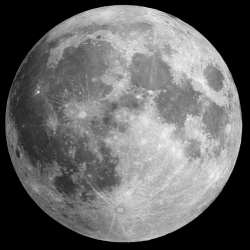
Being in tech means dreaming big. Companies like Google, SpaceX, and Microsoft have started showing an awareness that mega-projects, and the huge diversity they bring, have the potential to future-proof a position in the uncertain world of tech innovation. These projects, from the self-driving car to a mission to Mars, have been dubbed Moonshot projects.
Now a Japanese engineering firm wants to take that phrase to a more literal place than ever before, the moon itself. Stepping well outside its comfort zone, the Shimizu Corporation has a proposition that could end the world’s energy crisis by generating all of Earth’s power on the moon. In their own poetically translated words, their goal is nothing short of the infinite coexistence of mankind and the Earth. That’s certainly an admirable goal, but it’s one that many have tried to address over the years. Shimizu has been pushing the idea of a so-called Luna Ring for years now, doggedly insisting that the design could end all wanting for energy in the world, but could it?
The answer has to incorporate thinking from a truly dizzying array of tech sectors, from the cost of launching mass into space to the feasibility of constructing robots/autonomous 3D printers on the moon, to the efficiency of solar power itself, to our ability to wirelessly get that power back to the people who need it. Shimizu, one of the largest contracting companies in the world, is certainly in a position to make a strong argument on that topic, but let’s explore the idea a little further.
Essentially, the Luna Ring is an 11,000 kilometer long ring of solar collectors (mirrors) which funnel light onto a much smaller array of photovoltaic cells that generate power. 11,000 kilometers is a long way, but Shimizu envisions that the ring would grow in width from just a few kilometers at the outset to more than 400 kilometers in the end, from a thin ring around our satellite to a thick band covering roughly 11% of its surface.
That’s an enormous amount of space to be exploiting, and since Luna has no atmosphere to block a proportion of the incoming energy, its output is greater than it would be on Earth. At roughly four million square kilometers, the best affordable panels of today (with roughly 15% efficiency) could generate thousands of gigawatts of power. For perspective, the largest nuclear stations in the world often struggle to generate five gigawatts.
